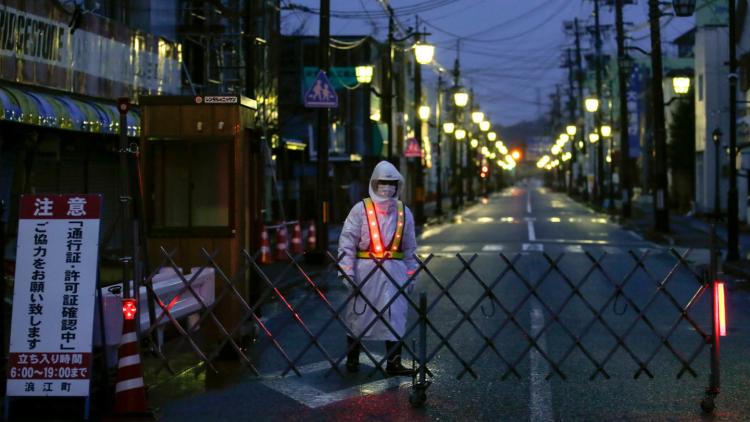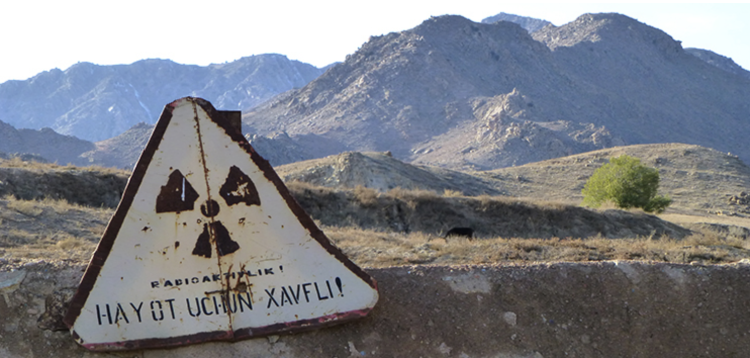A Tale of Two Asias: Living In and Beyond the Nuclear Age
About the project
March 2021 marked ten years since the Fukushima nuclear disaster. Not only did the triple reactor-core meltdown at the Fukushima Daiichi power plant create an unprecedented public health and economic challenge for all of Japan, but it also marked a shift in the trajectory of Japan’s nuclear industry. Whereas before the Fukushima disaster, Japan was expected to produce up to 50% of its electricity needs from nuclear energy by 2020, that number currently stands at 20%, roughly 2/3 of what it was a decade ago. While the future remains uncertain, Japan’s reliance on nuclear power to meet the majority of its energy needs is no longer guaranteed. Japan, of course, remains the only country in the world to have experienced wartime nuclear bombing. Long an ambassador for nuclear disarmament, Japan now sees itself questioning the peacetime production of nuclear energy as well.
Three years after the Fukushima disaster, China’s President Xi Jinping announced his signature foreign policy initiative: the ‘Belt & Road’. Designed in large part to address China’s oversupply of domestic infrastructural construction capacity, much of the BRI focuses on developing energy infrastructure connectivities across Asia and beyond, with nuclear power being a significant part of this infrastructure development. With 47 existing reactors which already account for 1/5 of global nuclear power generating capacity, China proposes to build at least 30 new reactors across Asia, as part of the BRI, by 2030. This is in addition to the 43 new reactors already planned for construction within China. In contrast to Japan, then, China’s future reliance on nuclear power is guaranteed. Indeed, China increasingly presents itself as a model of how to live in the nuclear age, while in Japan there has been much greater emphasis on living beyond the nuclear age.
Supported with a grant from the Albert Smith Nuclear Age Fund, the Center for Asian Studies will host a series of three focused workshops exploring this “tale of two Asias.” Already engaged in a broader examination of Asian infrastructure development through the China Made project (see https://chinamadeproject.net/), we will explore Japanese and Chinese modes of living in the nuclear age through a technopolitical lens, including considerations of the impacts of energy infrastructures on everyday life, social movements and cultural engagements with nuclear energy development, and the political implications of infrastructural risk and vulnerability. Collectively, these workshops will ask: What are the technopolitical dimensions of efforts to both survive in and move beyond the nuclear age in Asia? What do we learn from paying particular attention to the Japanese and Chinese contexts of these efforts?
Workshop 1: A Decade of Fukushima: Socio-Technical Perspectives on Surviving the Nuclear Age in Japan

On March 18th and 19th, CAS hosted an international group of scholars for the first workshop in this project: A Decade of Fukushima: Socio-Technical Perspectives on Surviving the Nuclear Age in Japan. Professor Hirokazu Miyazaki of Northwestern University launched the workshop on Thursday evening with his keynote address “Nuclear Compensation: Hope, Responsibility, and Collaboration around Fukushima.” On Friday, workshop presentations were delivered by Professors Ryo Morimoto (Princeton University), Hiroko Kumaki (Dartmouth College), Noriko Manabe (Temple University), and Sulfikar Amir (Nanyang Technology University). Discussion comments were provided by CU Boulder faculty Kate Goldfarb, Tim Oakes, Donna Goldstein, Miriam Kingsberg Kadia, and CAS postdoctoral fellow Darren Byler.
The Fukushima workshop focused on the experience of Japan which, 10 years ago, experienced the triple disaster earthquake, tsunami, and nuclear reactor meltdown in the northern Tohoku region. Presentations explored sociotechnical perspectives on how people in Japan have lived with the aftermath of the March 11, 2011 events. A ‘sociotechnical perspective’ is meant to recognize that nuclear power enrolls people, as individuals and as social collectivities, into a particular and peculiar set of relationships with technology. Those relationships blur the boundaries between science and society, and between technology and culture, in unique and compelling ways. For instance, how do people – in their everyday lives – understand and practice their relationship to radiation? How do they calculate different kinds of risk? How do they come to be involved in the measurement of radiation and the science of predicting health-related effects of radiation?
While the issues swirling around nuclear power are often portrayed in purely technical terms, the workshop’s aim was to demonstrate that nothing is ever ‘just technical’. Workshop presenters consider questions such as: How has the nuclear disaster brought about a crisis of expertise as people within the radiation zone live in a condition of uncertainty regarding the effects of radiation on their bodies, their animals, plants and soil? What have been the unexpected political outcomes of people’s encounters with nuclear technology? How do we define responsibility when considering the risks and benefits of nuclear energy? How have cultural practices been shaped by people’s relationship with the technologies and infrastructures of nuclear power, or with the technological interventions brought about by the disaster? In considering questions like these, workshop participants interrogated the intersections between cultural and social practices and technical or scientific processes in Japan’s efforts to address nuclear disaster risks, vulnerabilities and resiliency.
Workshop 2: China’s Nuclear Belt & Road
Socio-technical perspectives on China’s export nuclear infrastructures
April 22-23, 2022, Boulder, CO

This workshop explored the prospects for, and possible consequences of, China’s efforts to position itself, and Asia more broadly, as the global leader in nuclear power production. We asked: What have been the social, economic, cultural, and/or political effects and implications of China’s nuclear energy infrastructure development both within China and in other Asian countries where China is currently investing in nuclear energy development projects?
Key workshop themes included the role of international institutions and standards as a central part of any analysis of China’s nuclear export ambitions, the nature of nuclear power as a uniquely complex kind of infrastructure, and the possible social and political implications of nuclear power as a dominant source of energy in China and Asia more broadly.
Workshop 3: Fallout: Asian networks of nuclearity
Friday, October 27, 2023, Boulder, CO

This third workshop in the Tale of Two Asias project seeks to explore the networked and relational nature of Asian nuclearity. That is, what sorts of compartmentalizations, zones of exclusion, and narratives of separation have emerged as Asian people and places grapple with nuclear infrastructures of all kinds? How do we decompartmentalize nuclear governance and grasp the complex assemblage of nuclear energy? What insights might be gained from Asia in addressing this question?
Workshop panelists will include: Meredith DeBoom (University of South Carolina); Donna Goldstein (University of Colorado Boulder); Tong Lam (University of Toronto); Ann-Elise Lewallen (University of Victoria); Maxime Polleri (Université Laval); and Magdelena Stawkowski (University of South Carolina),
with discussion comments by Tim Oakes (University of Colorado Boulder) and Kate Goldfarb (University of Colorado Boulder)

